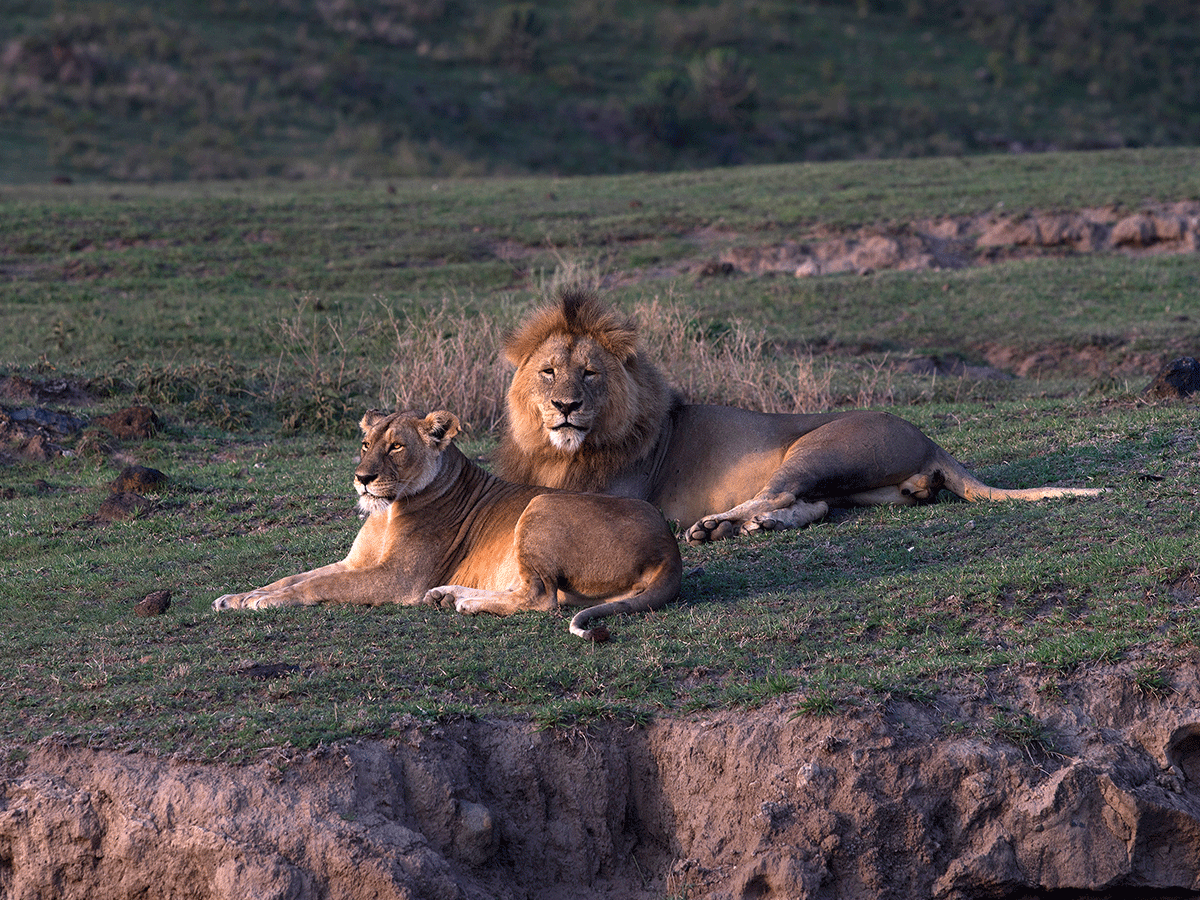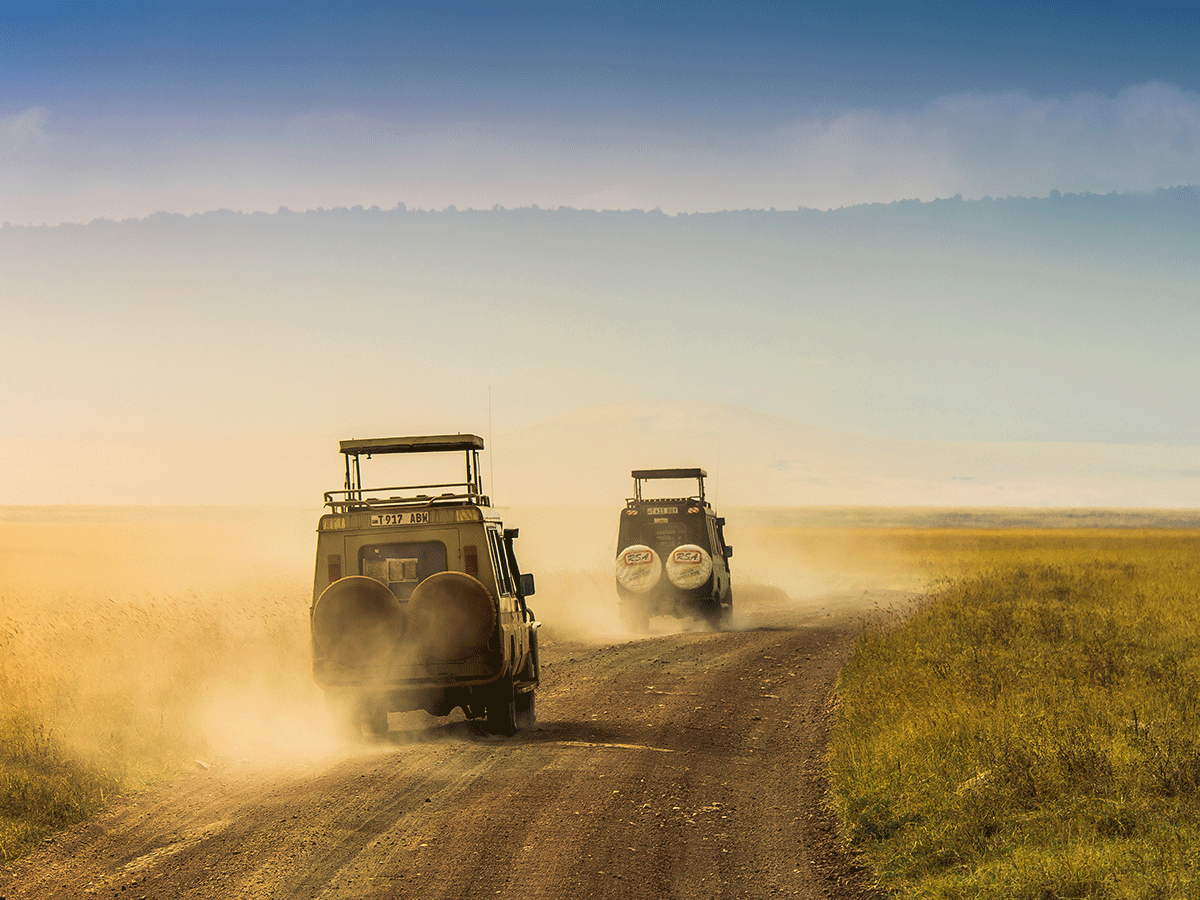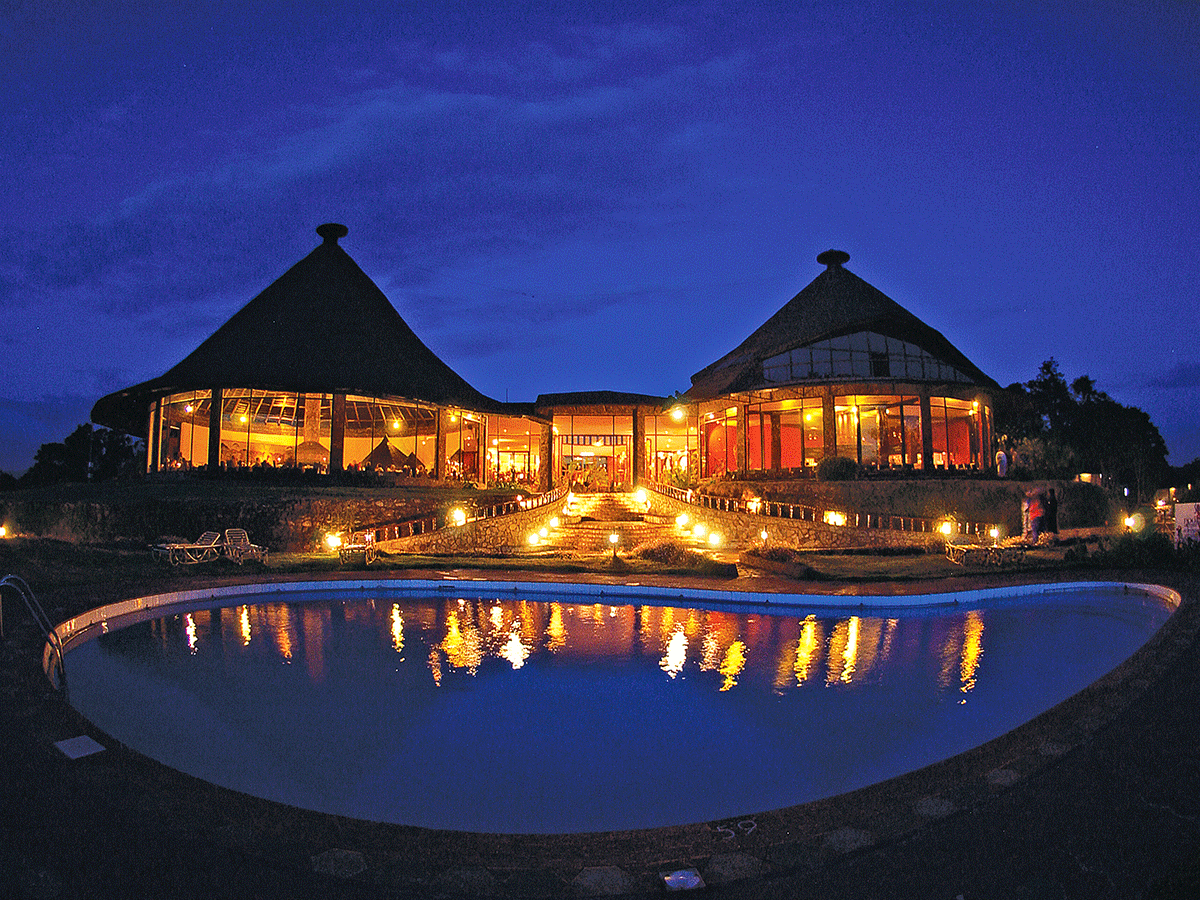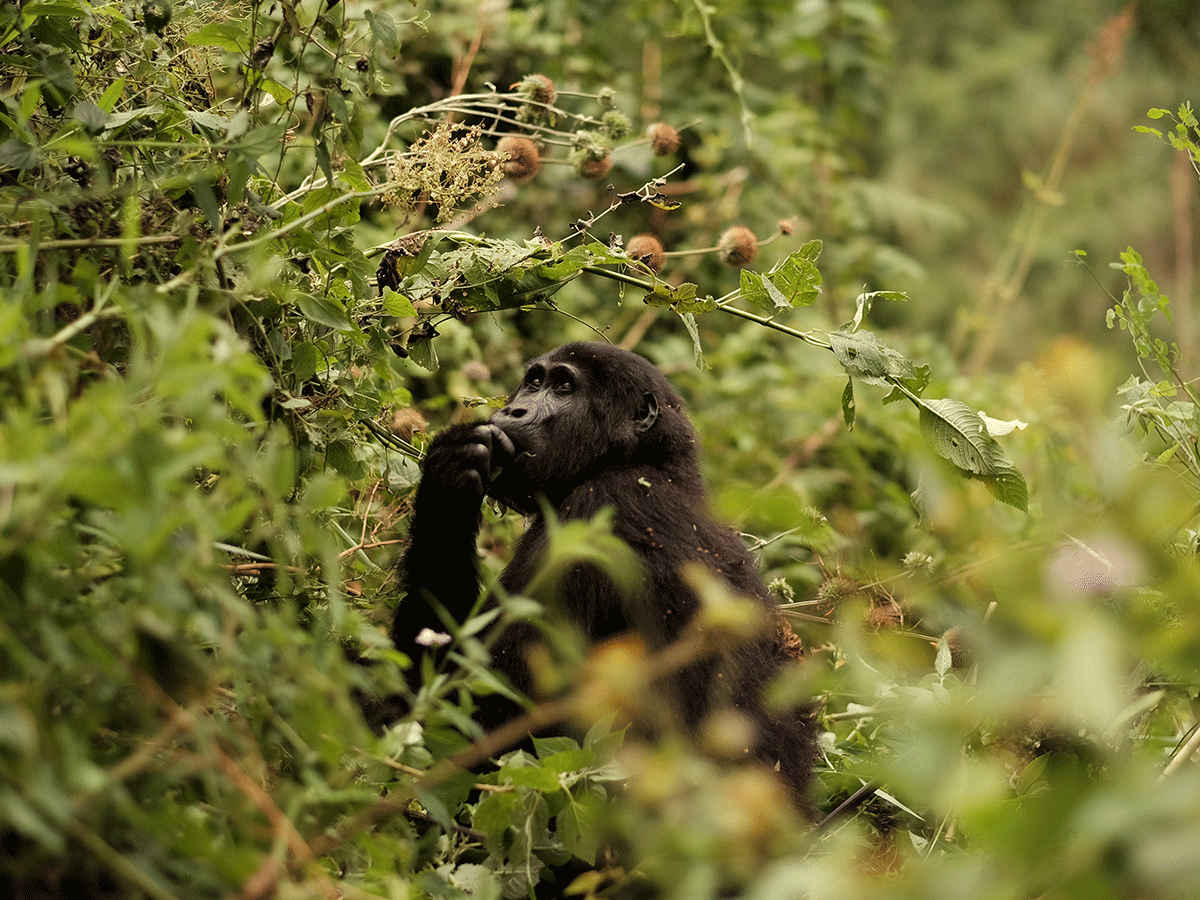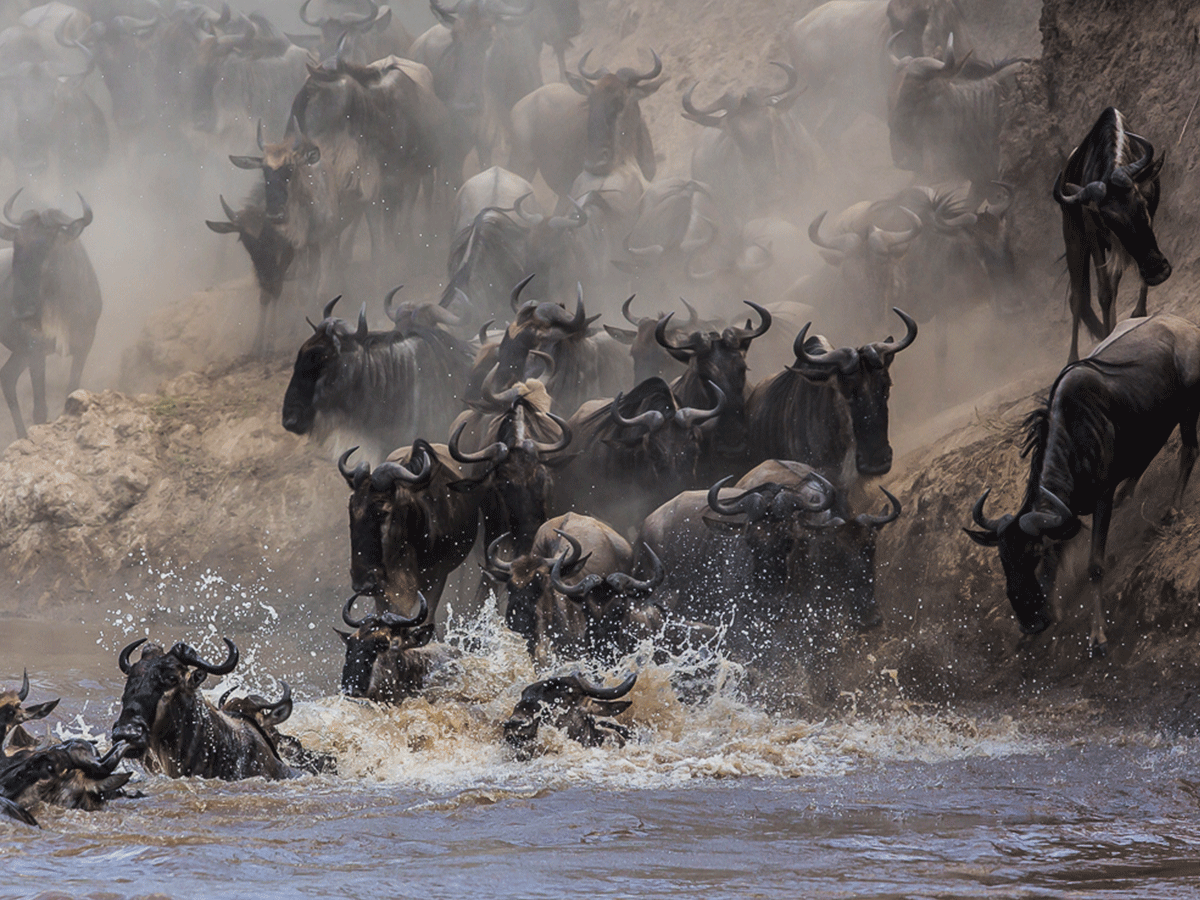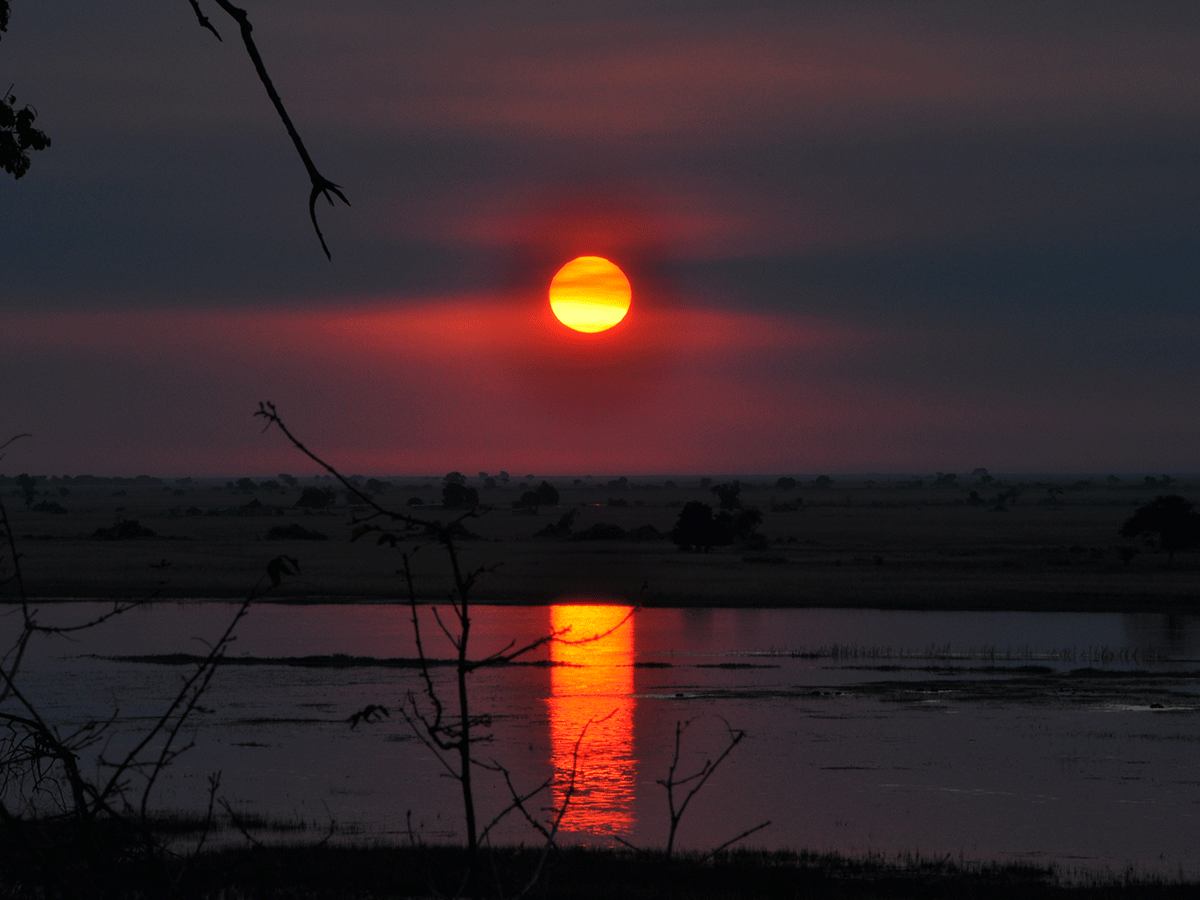Ngorongoro Conservation Area Tanzania
Home » African Safari Destinations » Tanzania Safaris, Tours & Holidays » Tanzania National Parks » Ngorongoro Conservation Area Tanzania
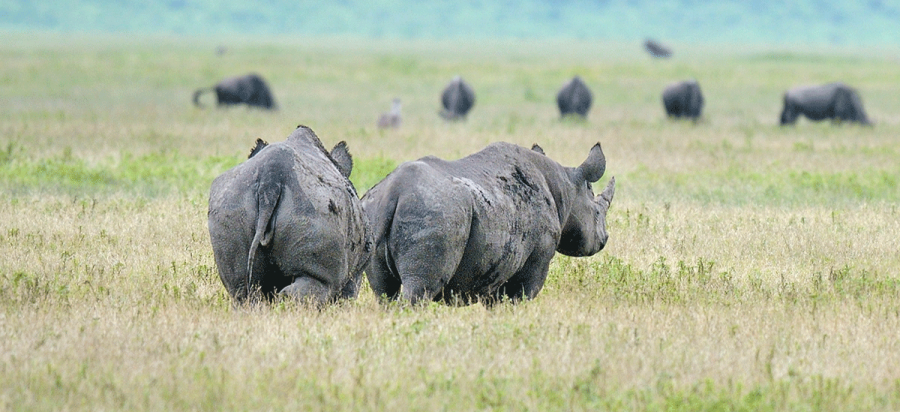
Ngorongoro Conservation Area Tanzania
The jewel in Ngorongoro crown is a deep, volcanic crater, the largest un flooded and unbroken caldera in the world. About 20 km across, 600 meters deep, and 300 sq. km in area, the Ngorongoro Crater is a breath-taking natural wonder.
The Ngorongoro Crater is one of Africa’s most famous sites and is said to have the highest density of wildlife in Africa. Sometimes described as an ‘eighth wonder of the world’, the Crater has achieved world renown, attracting an ever-increasing number of visitors each year. You are unlikely to escape other vehicles here, but you are guaranteed great wildlife viewing in a genuinely mind-blowing environment. There is nowhere else in Africa quite like Ngorongoro!
The crater floor consists of a number of different habitats that include grassland, swamps, forests, and Lake Makat (Maasai for ‘salt’) – a central soda lake filled by the Munge River. All these various environments attract wildlife to drink, wallow, graze, hide, or climb. Although animals are free to move in and out of this contained environment, the rich volcanic soil, lush forests, and spring source lakes on the crater floor (combined with fairly steep crater sides) tend to incline both grazers and predators to remain throughout the year.
Part of the reason behind the Ngorongoro Conservation Area has been to preserve the environment for the Maasai people who were diverted from the Serengeti Plains. Essentially, nomadic people, build temporary villages in circular homesteads called bomas. There are possibilities to visit a couple of these now, which has been opened up for tourists to explore. Here you can see how the huts are built in a strict pattern of order according to the chronological order of the wives, and experience what it must be like to rely on warmth and energy from a fire burning at the heart of a cattle dung dwelling with no chimney. These proud cattle-herding people have a great history as warriors, and even though they are no longer allowed to build villages inside, they continue to herd their cattle into the crater to graze and drink, regardless of the predators nearby.
Ngorongoro Crater is one of the most likely areas in Tanzania to see the endangered Black Rhino, as a small population is thriving in this idyllic and protected environment. It is currently one of the few areas where they continue to breed in the wild. Your chances of encountering leopard here are also good and fabulous black-manned lions. Many flamingos are also attracted to the soda waters of Lake Magadi.
Size of Ngorongoro Conservation Area Tanzania
The Ngorongoro Crater is the world’s largest intact volcanic caldera. Forming a spectacular bowl of about 265 square kilometers, with sides up to 600 meters deep; it is home to approximately 30,000 animals at any one time. The Crater rim is over 2,200 meters high and experiences its own climate. From this high vantage point, it is possible to make out the tiny shapes of animals making their way around the crater floor far below. Swathes of cloud hang around the rocky rim most days of the year and it’s one of the few places in Tanzania where it can get chilly at night.
Location of Ngorongoro Conservation Area
Ngorongoro Conservation Area is in northern Tanzania. It’s home to the vast, volcanic Ngorongoro Crater and “big 5” game (elephant, lion, leopard, buffalo, rhino). Huge herds of wildebeests and zebras traverse its plains during their annual migration. Livestock belonging to the semi-nomadic Maasai tribe graze alongside wild animals. Hominin fossils found in the Olduvai Gorge date back millions of years.
See our popular Ngorongoro Crater safaris
How to get to Ngorongoro Conservation Area Tanzania
From Arusha, you can hop around the parks of the northern circuit by small aircraft on chartered or scheduled flights, or you can drive and do the whole circuit by safari vehicle. A popular option is to fly into the Serengeti and make your way back by safari vehicle via the Ngorongoro crater, or the other way around. In most cases, your tour operator will pick you up from the airport.
Coming from the Seronera area in the Serengeti, the distance to the crater is about 140km/ 90mi and the driving time is about three hours. This can obviously take much longer allowing for wildlife viewing along the way. The 80km/ 50mi drive from Lake Manyara to the Ngorongoro Crater takes about two hours, and the 180km/ 110mi drive from Tarangire takes about four hours.
Things to do in Ngorongoro Conservation Area Tanzania
Without a doubt one of the best areas in Africa for wildlife viewing and scenic drives and it also offers a wide range of activities in the area like
Game Drives and wildlife viewing
Game drives are without a doubt the best way to view wildlife in the Ngorongoro Crater. Game drives are done with a standard tour van and are organized in two shifts – morning and afternoon. By 4:30 pm, all tour vans must be out of the crater. You need at least three days to explore each and every part of the crater. On every safari, expect to see all the big 5 mammals, birds, lakes, lush forests, and savannah vegetation to marvel at.
Photographic Safari
If you have already taken a game drive at the Ngorongoro crater before and liked what you saw, you can organize another safari with the sole purpose of taking amazing wildlife photos. A photographic safari should not only be about the animals but also birds, lakes, and savannah vegetation. There are Maasai tribesmen living close to the crater who may be open to being part of your photography expedition.
Visiting the Maasai
The Maasai are one of Africa’s most intriguing tribes. Although they live outside the crater itself, they are allowed to graze their animals around the crater rim or bring them down the crater for water during the dry months of the year. While visiting the Ngorongoro Conservation area, an arrangement can be made for tourists to visit one of their homes or cultural centers to learn about their traditions and culture. It is more rewarding to visit villages/families that are less-visited so that you have a more enriching experience instead of stage-managed tours. Visiting the Maasai people involves attending traditional dance performances, taking photos, buying souvenirs, and meeting the elders.
Enjoy Picnic Lunch
Have you ever dreamt about having a beautiful picnic lunch in the African wilderness with wildebeest grazing nearby? The Ngorongoro Crater will not disappoint.
Visiting Tanzania’s Last Bushmen
When the Maasai arrived in the Serengeti area about 300 years ago, they drive out the Hadzabe Tribe and other Bushmen to remote areas of the park. Less than 2000 of these Bushmen still live in the area. Unlike the Maasai who have embraced modern ways of living, these Bushmen remain primitive and still live off hunting and gathering. A tour of their remote habitats will allow you to discover their culture and secret ways of living.
Nature and Crater View Walks
After completing activities down the crater and getting back to your lodge for a shower, you might want to take a stroll along the edges or rim of the crater. The western edge of the crater offers great views of the woodlands, open grasslands, and acacia forests. You can also watch as the Maasai take their cattle for grazing or back to the kraals.
Bird watching
The Ngorongoro crater is one of the best places for birding in Tanzania. The species to look out for are the flamingos, Kori bustards, and crowned cranes. From the crater rims, one can observe species like the African Cytrill sights, forest buzzard, golden-winged sunbirds, and white eyes slaty flycatcher.
Hot Air Ballooning
This is an expensive but very adventurous way to explore the vast crater and surrounding areas. Hot air ballooning is highly recommended especially during the migration – when the wildebeest are roaming or calving outside the crater and the nearby Serengeti. The great thing about hot air ballooning is that it allows tourists to appreciate and enjoy the beautiful scenery within the crater.
Hiking to the summit of the Gol Mountains
The Gol Mountains are found within Serengeti National Park. The slopes are excellent for wildlife viewing and cultural encounters with the resident Maasai Herdsmen. At the base of the Gol Mountains is the famous Nasera Rock where tourists can spot a variety of birds and hundreds of baboons. The Leakey family excavated remains of humans who lived there during the Stone Age period. The Gol Mountains will capture your imagination if your dream is to explore the remote African wilderness. After exploring the Gol Mountains, you can also choose to conquer an active volcano known as Oldoinyo Lengai.
Visit Olduvai Gorge
The Olduvai Gorge is known as the “Cradle of Mankind”. It is where the oldest archaeological discoveries were made by Richard Leakey and his family. The Leakey’s discovered the remains of the very first hominids in Olduvai Gorge in the early 20th Century. They went on to make some ground-breaking discoveries with most of them older than 2 million years ago. The fossils include that of extinct animals that roamed the area and the more recent Stone Age man. You can register to be taken for a guided walk within the gorge. Do not forget to check out the hominid footprints in Laetoli. These footprints were discovered on a volcanic rock and are over 3 million years old. There is a small museum that was built for public viewing and contains excavated remains and artifacts for tourists to see.
Visit the Empakaai Crater
This is the smaller sibling of the Ngorongoro Crater. The Empakaai Crater was also formed when a volcano collapsed into a 6-kilometer-wide caldera. It is a lesser-known crater but with a lot to offer. Much of it is covered by a deep alkaline lake that is 85 meters deep. The lake changes color depending on the time of the day and attracts thousands of flamingos because of abundant algae. The rims of the crater are home to pink flamingos, blue monkeys, waterbucks, bushbucks, buffaloes, elephants, and hyenas. Beyond the crater are stunning views of Mount Kilimanjaro and Ol Doniyo Lengai.
Olmoti Crater
Among the Maasai, Olmoti means cooking pot. The shallow crater is found within the Ngorongoro conservation area highlands and stands at 3080 meters above sea level. The grassy hollows of the crater are excellent for hiking and nature walks. It is where most of the Maasai herdsmen take their domestic animals for grazing alongside buffaloes, bushbucks, eland, and reedbuck. You can crown your tour of the Crater by visiting a nearby waterfall (100 meters) that feeds into Lake Magadi.
Lake Magadi
If you are fascinated by beautiful scenery, nature, and birds, then the shallow lake Magadi will not disappoint. This paradise attracts wading birds like pelicans and flamingos in the thousands. Lake Magadi is one of the best places for birding in Tanzania. Thousands of tourists visit Tanzania specifically to watch flamingos forage for green algae in the alkaline lake.
Lerai Fever Tree Forest
This forest is one of the best attractions within the Ngorongoro Crater. It contains rare acacia trees that are slim, tall, and yellow in colors. The distinctive look and ability to attract wildlife is what fascinates tourists. The trees thrive here but can also be seen in small numbers when you visit some water bodies in Africa. The Lerai Fever Tree Forest is the best place to spot black rhinos. They are attracted to the vegetation in the forest. The acacia trees also attract hyrax, bushbucks, elephants, and countless birds
When to visit Ngorongoro Conservation Area Tanzania
Dry season/High season (from June to October): This is the best time to visit Ngorongoro because it is the dry season whereby animals gather at water pools and holes and this makes it easier for people who visit Ngorongoro for game watching.
The main April to May rainy season is often considered the best time to visit the Ngorongoro Crater as there are far fewer visitors and the crater is wonderfully lush and green compared to the dusty dry-season landscape.
Where to stay in Ngorongoro crater Tanzania
Best places to stay on a safari at the Ngorongoro Crater. Ngorongoro Crater Lodge. without a doubt one of the top ten hotels in the world. Entamanu Camp. Kirurumu Ngorongoro. Lemala Ngorongoro Camp. Ngorongoro Serena Lodge. Ngorongoro Sopa Lodge.
You might also like
THINGS TO DO
| Game drives in Ngorongoro crater |
| visit Lerai fever tree forest |
| Visit the Masai village |
| Visit Lake Magadi |
| visit Tanzania’s last Bushmen |
| visit Olmoti crater |
| Nature walks and Crater view walks |
| Visit Empakaai Crater |
| Bird watching in Ngorongoro crater |
| visit Ol Doinyo Lengai |
| Hot air balloon safaris |
| Visit Olduvai Gorge and Museum |
HOW TO GET THERE
| How to get to Ngorongoro conservation area |
SAFARI PACKAGES
| 3 Days Ngorongoro crater safari |
| 4 Days Luxury Ngorongoro crater safari |
| 5 Ngorongoro and Ndutu safari |
WHEN TO GO
| Best time to visit Ngorongoro conservation area |
WHERE TO STAY
| Ngorongoro sopa Lodge |
| Ngorongoro Serena Lodge |
| Lamela Ngorongoro camp |
| Kirurumu Ngorongoro |
| Entamanu camp |

